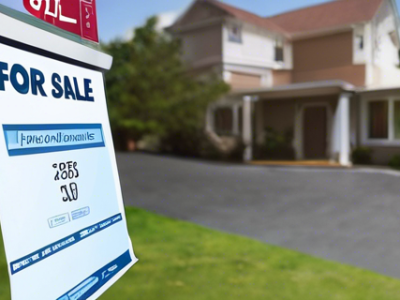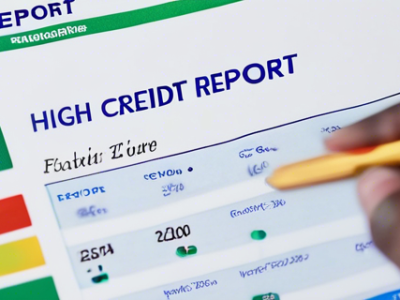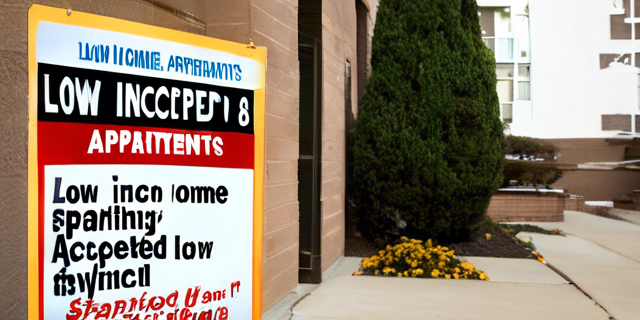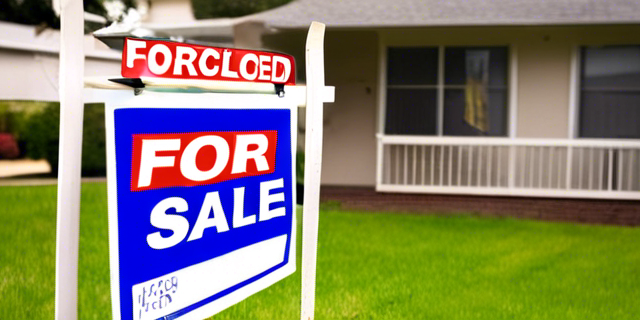Becoming a First Time Landlord with Rental Property

Becoming a First Time Landlord with Rental Property
Many people dream of owning investment properties and becoming landlords. And why not? Building rental income streams promises financial freedom. Yet, for first-timers, managing tenants and properties is often trickier than envisioned. Successfully jumping into land lording requires forethought, research, and preparation.
Your journey transitioning from homeowner to amateur landlord has just begun. Don’t worry, though—follow this guide to navigate key decisions with confidence as you wade into property management. Soon, you will comfortably reap rental rewards.
Clarifying Your Investment Goals
Before anything else, carefully consider why you want to buy rental real estate. Clearly defining goals and motivations will profoundly shape subsequent decisions, unit selection, financing options, and management approach.
For example, seek primarily passive income streams? Crave long-term equity accumulation? Want flexible retirement cash flow? Each objective suggests different ideal investments and landlording strategies. Once you clarify aims, identifying compatible properties becomes easier.
Choosing Where to Buy Rental Property
With goals set, now ponder location. Real estate markets vary tremendously, so study options matching aspirations.
Local or Out-of-State?
First decide whether to buy rentals locally or remotely. Both provide benefits.
Benefits of Local Investment Properties

Becoming a First Time Landlord with Rental Property
Owning nearby rentals simplifies hands-on landlording, allowing you to directly and quickly handle tenant issues, maintenance, unit upgrades, showings, etc. If looking to develop deep community ties through properties, local investing also eases relationship building.
Benefits of Out-of-State Investment Properties
Alternatively, purchasing remotely diversifies holdings across markets. You can capitalize on more favorable purchase costs, rents, taxes, and appreciation rates unavailable locally. Just ensure to vet property managers thoroughly if overseeing from afar.
Other Location Considerations
Also compare specific metro areas and neighborhoods on factors like:
- Rental demand – Seek lots of renter interest ensuring consistent occupancy
- Cash flow potential – Target markets offering optimal rent to price ratios
- Property value outlook – Choose reasonably priced areas poised for appreciation
- Infrastructure and amenities – Favor walkable communities near attractions
- Crime rates – Ensure neighborhood safety
- School district rankings – Top-rated districts command premium rents
- Local employer landscape – Growing major businesses bodes well for rental appeal
- Renovation costs – Lower upgrade expenses improve investment feasibility
Carefully weighing all location pros and cons will guide you towards prudent purchases.
Selecting the Right Rental Property Type
Beyond geography, also decide what kind of rental unit best aligns with your goals. Common first investments include single-family homes, condos/townhomes, duplexes, triplexes, or fourplex residences.
Key Differences Impacting Choices
Consider key variations across property types regarding:
- Affordability – Smaller multi-family buildings often cost less
- Earned rental income – More units equal more total rent
- Cash flow – Single-family rentals initially cash flow better
- Financing options – Lenders treat property types differently
- Maintenance costs – Individual houses typically cost more to upkeep
- Management workload – Multi-unit buildings take more oversight
- Tenant relationships – Interactions range from personal to businesslike
- Liquidity – Individual homes sell fastest typically
Carefully weighing tradeoffs will guide your investing plans.
Finding Good Rental Property Listings
Once clear on goals and target location/property types, the exciting search for potential listings begins. But where to look?
Working With Real Estate Agents
Seeking agent-listed properties makes sense for first-timers. Experienced realtors conveniently aggregate available homes meeting your criteria across area MLS databases. Agents also coordinate showings, negotiate offers, and handle contracts.
Tips for Finding a Good Real Estate Investment Agent
When selecting an agent, find specialists with deep investment property expertise regarding:
- Local markets – Seek market-specific insights on trends, rents, regulations, etc. Local veterans outperform remote mega-agents.
- Property valuations – Confirm extensive comp analysis skills accurately assessing fat profits
- Financing – Ask about landlord loans and secured financing like DSCR products
- Screening tenants – Ensure they understand tenant vetting best practices
- Landlording laws – Require legal insights regarding landlord-tenant relations
- Trustworthiness – Find earnest professionals committed fully to your success
Taking time to identify compatible, strategically-aligned agents with rental expertise pays dividends.
Researching FSBO Listings
In addition to agent listings, also consider for-sale-by-owner (FSBO) properties. FSBOs often sell below market value since owners avoid realtor commissions.
- Scour Craigslist, Zillow, social media groups, and physical yard signs for FSBOs.
- Vet these direct-from-seller deals especially carefully, using comparable sales data and professional inspections to confirm prices and condition.
- Be prepared to handle purchase paperwork and negotiations yourself without an agent’s guidance.
In the right circumstances, FSBOs make fantastic rental investments, enabling bargain buying.
Arranging Financing to Purchase Investment Property
With target properties identified, securing capital funding comes next. Fortunately, multiple landlord-friendly financing options exist beyond conventional mortgages.
Down Payments
Unlike primary home loans, rental property down payments may be as low as 5-15%. Government backed FHA loans require just 3.5% down. This enables first-time investors to enter markets with less cash.
Loan Types
Investor loans differ from standard home loans, coming in two main flavors:
Rental Mortgages
Whether FHA, VA, USDA or conventional loans, rental mortgages work much like primary residence loans. However, you must be qualified based on your existing income and debts. Rental income doesn’t directly impact loan qualification.
Commercial Investor Loans
Alternatively, commercial investor mortgages specifically factor rental property cash flow. These ”DSCR” (debt service coverage ratio) loans qualify you based on the property’s projected net income, meaning you can borrow more.
DSCR products also offer perks like lower down payments, 30-year fixed rates, and interest-only options. However, commercial loan qualification involves strict scrutiny of your landlording track record and rental profitability models.
Other Financing Options
Beyond standard mortgages, first-time landlords can also utilize:
- Hard money loans
- Home equity loans or lines of credit
- 401(k) / IRA funds
- Private money loans from investors
- Partnership structures to pool funds
Getting creative with financing alternatives enables more newbies to achieve ownership.
Preparing Rentals Before Listing: Renovations and Upgrades
Once purchasing your property, preparing it for tenants comes next. While move-in ready homes require little work beyond deep cleaning and maintenance, most investments need upgrades tailored to renters.
Cosmetic facelifts refresh drab or outdated finishes, while strategic enhancements maximize functionality. Follow these renovation best practices when prepping rentals:
Focus Efforts Strategically
Prioritize changes delivering maximum rental value boosts given budget constraints. For instance, avoid over-improving luxury kitchens in working-class neighborhoods.
Blend Essential and Aesthetic Upgrades
Curb appeal matters, but don’t overlook major systems, safety, accessibility, storage, and traffic flow. Find the sweet spot balancing dazzle with function.
Employ Durable Finishes
Opt for indestructible surfaces in high-wear areas: metal vs. wood cabinets, luxury vinyl vs. tile flooring, solid surface vs. laminate countertops. This saves future headaches.
Consider Universal Design Elements
Incorporate ADA-inspired features like zero-entry showers, lever handles, wide halls, low thresholds, and rocker light switches suiting guests of all abilities.
Check Local Property Condition Requirements
Research mandatory habitability rules, lead laws, fire codes, and required efficiencies governing legally rentable homes in your area before investing in renovations.
Attracting Great Tenants and Marketing Vacancies
With welcoming rentals ready to lease, filling vacancies with reliable long-term residents is the next crucial step. Consistent occupancy ensures smooth sailing for novice landlords. But enticing ideal tenants requires strategic marketing and vetting.
Creating Listings
First, craft compelling listings showcasing your property’s amenities and value. Trained agents can provide time-tested rental content templates to adapt. Be sure to splurge on professional photography.
Pricing Units Strategically
When establishing asking rents, research comparative units in the neighborhood, while factoring in property conditions, sizes, amenities, and target tenant profile. Price competitively to attract interest while optimizing ongoing cash flow. Consider offering discounted introductory rates to fill vacancies faster.
Listing Rentals Broadly
Post listings widely across platforms popular with local renters like Zillow, Apartments.com, and Craigslist. Use eye-catching descriptions highlighting amenities most important to tenants.
Promoting Vacancies Strategically
Boost online listings via targeted social media advertising. Geofence ads to surrounding neighborhoods. Leverage remarketing tools keeping your brand top-of-mind among prospective renters browsing listings in the area.
Preparing for Showings
Make an amazing first impression by keeping interiors spotless and staging key rooms. Ensure sufficient availability to give walkthroughs. Provide printed materials like FAQs, applications, leases, and showing feedback forms.
Vetting Tenants Carefully
Showings complete, thoroughly vet applicants before signing leases to avoid delinquent and destructive residents.
Required Renter Screening Protocol
Follow best practice screening involving:
- Background/credit checks assessing financial responsibility
- Employment and income verification ensuring adequate earnings
- Past landlord reference and rental history confirms responsible tenancy
- Full legal identification of all adult occupants
Digging Into Specifics
Probe screening results for potential issues regarding:
- Evictions and property damage history
- Bankruptcies or excessive debts relative to income
- Short job stints or employment gaps
- Large pet ownership, smoking, or other policy violations
- Criminal records involving violence, theft, or fraud
Weigh findings individually given unique contexts when making final tenant selections.
Signing Leases and Move-In Logistics
Upon final tenant approval comes lease execution and move-in coordination.
Ensuring Properly Structured Leases
Utilize binding lease agreements detailing party rights/responsibilities, rent rates/due dates, security deposits, maintenance designations, occupancy limits and all policies protecting you legally as landlord. Define breach protocols addressing issues from late payments to unauthorized guests. State specific tenant financial liabilities for damage repair.
Performing Rental Walkthroughs
Accompany new tenants do document pre-existing unit condition with photos/video on initial move-in. Log any prior wear like carpet stains or appliance dings. Review maintenance protocols and emergency contact procedures. Collect keys distributed.
Collecting Security Deposits
Gather standard first month rent plus full refundable security deposit upfront at lease signing. Typically equal to one month’s rent, security funds cover any unpaid dues or unit damages if tenants vacate improperly. Always provide proper payment receipts.
With ideal residents secured and moved in properly, the fun really starts as new landlord lifestyle commences!
Developing Systems for Ongoing Property Management
Congratulations, your investment property is officially rented! Now the day-to-day work maintaining properties while profiting begins. Be sure to:
Institute Regular Inspections
Perform periodic unit walkthroughs to validate responsible tenant care and identify emerging maintenance needs. Provide proper legally required entry notice beforehand. Incorporate annual/biennial inspections checking safety equipment and essential systems functionality.
Define Maintenance Protocols
Create systems governing how occupants should report issues and how you will coordinate both emergency and routine repairs using trusted providers. Be ultra-responsive to urgent fixes impacting tenant health or property integrity.
Cultivate Relationships
Make regular contact with friendly check-ins to monitor experience and changing needs. When possible, provide little conveniences like replacing furnace filters proactively or touching up scuffs for free. Such gestures foster community.
Implement Rent Payment Systems
Establish clear on-time monthly rent collection processes via direct bank transfers. Avoid cash payments. Quickly address non-payment according to lease policies. Annually adjust rents according market rates.
Maintain Detailed Records
Closely document all financial transactions, communications and unit activity for taxes and dispute mediation if ever necessary.
While arduous at times, honing such operational processes improves landlording efficiency greatly.
Evaluating Direct vs Outsourced Property Management
Especially when juggling multiple properties, consider whether to self-manage units or utilize a third-party rental property management service. Assess options.
Handling Everything Yourself
Self-managing maximizes rental revenue since no middleman fees deduct. Hands-on control enables establishing genuine tenant relationships through service. Execute upgrades and renovations per your exact specifications.
However, doing everything personally demands major time investments directly handling maintenance, advertising vacancies, screening applicants, chasing late rent, evictions, accounting, etc. Potentially risky unless extremely organized.
Hiring an Onsite Manager
For larger properties like multi-family buildings, onsite manager hires who live rent-free in exchange for handling operations are common. This delegates reliably to someone always available when tenant issues inevitably arise. Just split additional units to cover their compensation. Potential personality conflicts do loom though with live-in arrangements.
Using Third-Party Property Management Firms
Alternatively, experienced full-service property management companies oversee everything for around 10% of collected rents. They market listings, vet tenant applications, coordinate maintenance, direct lease renewals and more so owners enjoy truly passive income. However such help isn’t free or perfect. Reputations vary greatly across providers.
Weigh cost/benefit tradeoffs regarding your budget, portfolio scale and personal bandwidth when deciding between self-management and outsourcing. Hybrid approaches are also possible.
Preparing to Handle Challenging Tenant Situations
Even the most prudent preparation and strict tenant vetting cannot prevent occasional conflicts. Prepare professional protocols addressing difficult scenarios like:
Late Rent Payments
Have clear lease terms dictating precise late fee assessments after strict payment due dates, and required actions following protracted non-payment from firmly worded notices through to eventual needed evictions.
Unexpected Departures Mid-Lease
While security deposits discourage premature move-outs, be ready to aggressively remarket and fill vacancies should they occur unexpectedly. Also account for all funds owed through lease conclusion during final walkthroughs.
Unauthorized Occupants or Pets
Protect profitability and peace by quickly addressing unauthorized residents or pets discovered during inspections. Kindly refer to signed leasing contracts when asking offenders to vacate or remove pets. Serve formal notices as needed per local regulations.
Tenant Complaints About Conditions
Address authentic structural or system failures promptly. For suspect claims, conduct joint unit walkthroughs to demonstrate pristine conditions proving accusations false. Offer reasonable concessions to placate complainers.
Property Damage
When damage is reported/observed, investigate cause and coordinate professional repairs, billing validated expenses to tenant security deposits when warranted. In cases of extreme destruction, file insurance claims.
While staying constantly positive, also be prepared to firmly exercise full legal authority. Protect hard earned returns.
Leveraging Expert Guidance
Don’t go it alone! Cultivating trusted mentors accelerates success.
Finding an Accountant
A tax-saavy accountant specialized in landlord clients ensures fully optimized returns. Review filings together and discuss growth strategies for expanded holdings.
Working with Legal Counsel
Establish relations with a real estate attorney to consult regarding localized compliance, landlord-tenant law, lease standards, and liability considerations when issues arise.
Networking with Fellow Landlords
Join regional landlord associations to exchange ideas with veterans owning similar portfolios. Brainstorm solutions and cautionary tales about navigating tricky situations.
Surrounding yourself with skilled specialists ensures you avoid costly missteps when charting new territory.
Conclusion
While rentals offer alluring income streams, seamless landlording requires tireless effort, at least initially. But follow these guides to clarify goals, select properties in promising markets, fund deals advantageously, upgrade units strategically, market rentals effectively and manage operations smoothly. Over time, portfolios provided diversified passive earnings do materialize if you invest diligently. Soon you will enjoy the many rewards of maintaining properties for the benefit of others. Just take that first step—happy renting!
Commonly Asked Questions About Becoming a First Time Landlord
Below are answers to some frequently asked questions about starting out as a new landlord:
What are the main start-up costs for first-time landlords?
Key upfront costs typically include: down payments, closing fees, inspection/appraisal charges, financing costs, renovation & upgrade projects, staging, photography/marketing materials, legal fees, insurance policies, maintenance reserves, etc. Budget substantially to launch properly.
What legal protections exist for novice landlords?
Key legal provisions benefiting landlords include requiring detailed lease agreements outlining tenant responsibilities, collecting security deposits covering damages, adhering to entry notification laws, documenting property condition, following precise eviction protocols, small claims court options, housing discrimination prohibitions, etc. Know rights.
What are tenant red flags to watch for?
Beware applicants with prior evictions, collections/legal judgments against them, credit scores below 600, felony convictions, frequent past moves, incomplete rental histories, missing identification, pet policy violations or who resist standard









